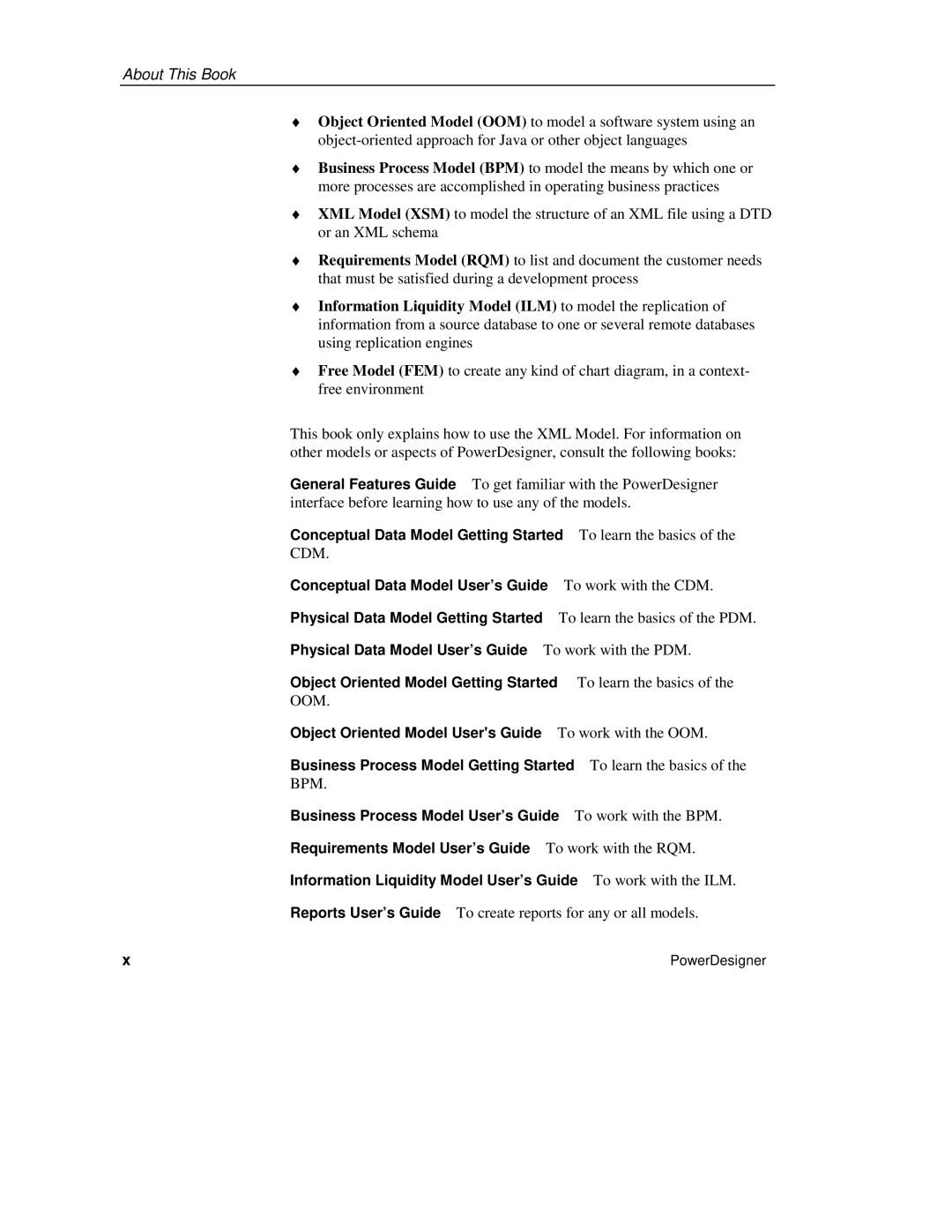About This Book
♦ Object Oriented Model (OOM) to model a software system using an
♦ Business Process Model (BPM) to model the means by which one or more processes are accomplished in operating business practices
♦ XML Model (XSM) to model the structure of an XML file using a DTD or an XML schema
♦ Requirements Model (RQM) to list and document the customer needs that must be satisfied during a development process
♦ Information Liquidity Model (ILM) to model the replication of
information from a source database to one or several remote databases using replication engines
♦ Free Model (FEM) to create any kind of chart diagram, in a context- free environment
This book only explains how to use the XML Model. For information on other models or aspects of PowerDesigner, consult the following books:
General Features Guide To get familiar with the PowerDesigner interface before learning how to use any of the models.
Conceptual Data Model Getting Started | To learn the basics of the | |
CDM. |
|
|
Conceptual Data Model User’s Guide To work with the CDM. | ||
Physical Data Model Getting Started | To learn the basics of the PDM. | |
Physical Data Model User’s Guide | To work with the PDM. | |
Object Oriented Model Getting Started | To learn the basics of the | |
OOM. |
|
|
Object Oriented Model User's Guide | To work with the OOM. | |
Business Process Model Getting Started | To learn the basics of the | |
BPM. |
|
|
Business Process Model User’s Guide | To work with the BPM. | |
Requirements Model User’s Guide | To work with the RQM. | |
Information Liquidity Model User’s Guide To work with the ILM. | ||
Reports User’s Guide To create reports for any or all models. | ||
x |
| PowerDesigner |
